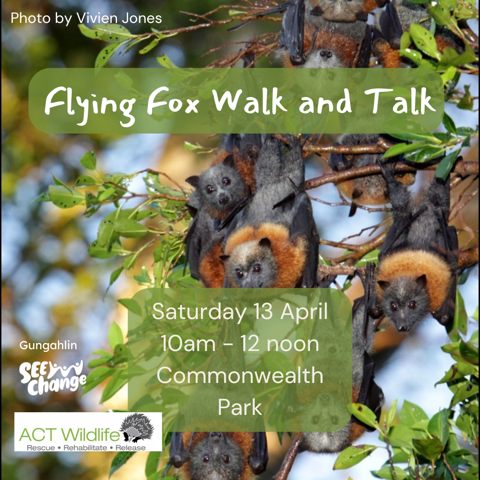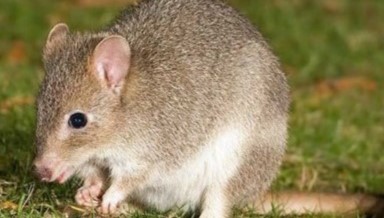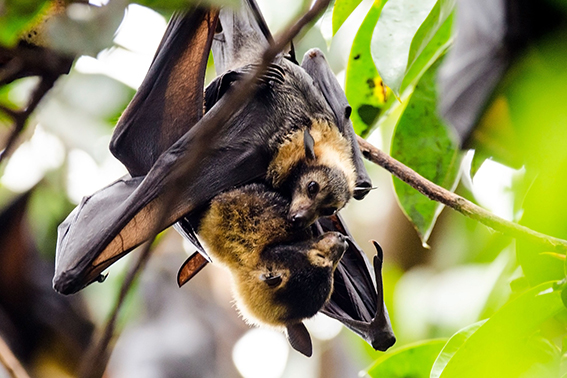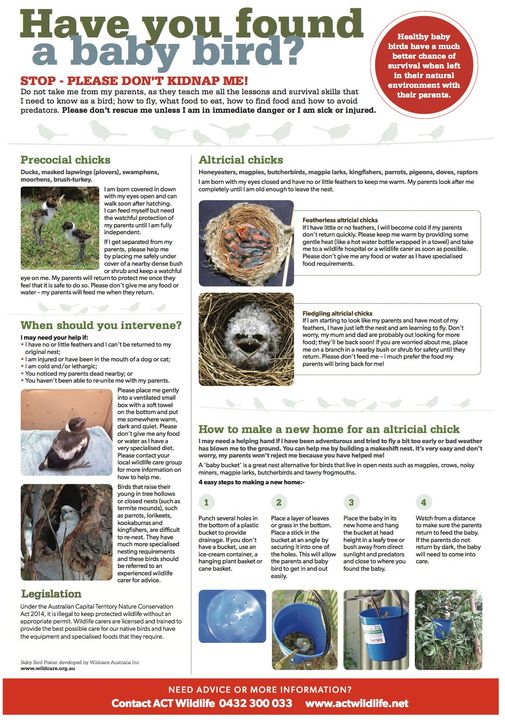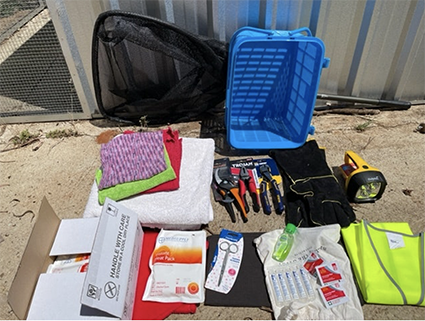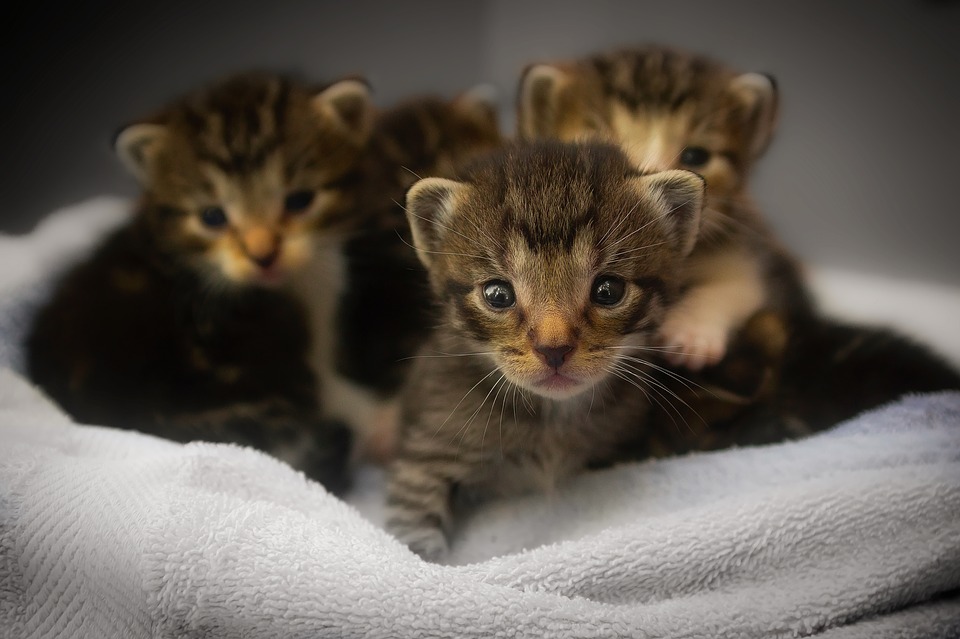News
Flying fox walk and talk
13th April 10-12pm, Commonwealth Park
SEE Change Gungahlin and ACT Wildlife invite you to visit the bat camp at Commonwealth park. Wildlife ecologist Peggy Eby will teach us about the flying fox colony and ACT Wildlife Flying Fox co-coordinator Stephen Bartos will give us tips on how ensure their survival. Register here
Happy Easter(n) bettong!
Image: JJ Harrison, Creative Commons by SA 3.0.
This Easter long weekend, consider a trip to Mulligans Flat Woodland Sanctuary to find out about the work they do for Australian wildlife.
The sanctuary is open 24/7. So, if you visit after dark keep an eye out for Eastern bettongs.
In November 2023, 8 Eastern bettongs were released into the sanctuary as part of an ongoing project to reintroduce them to mainland Australia. Mulligans Flat started reintroducing Eastern bettongs in 2012. They now have well over 100 of the adorable marsupials.
’For more than 100 years, Eastern bettongs, also known as Ngaluda in the Ngunnawal language, have been extinct outside of Tasmania, said Minister Vassarotti, Minister for the Environment.
’The release of these bettongs is significant not just for our local environment, but for the entire country. The Eastern bettong has a pivotal role in its ecosystem, where some of their activities include spreading truffle spores, helping to regenerate the soil, and creating burrows that support native plant growth.’
For more information visit the Mulligans Flat Woodland Sanctuary website.
Interested in protecting local wildlife?
Net success for wildlife
ACT Wildlife’s 2023 Net Swap Program has been a big success story for Canberra’s wildlife.
Netting your garden fruit and vegetables can help protect them from pests but can also harm animals. Flying-foxes, possums, birds and other wildlife can tangle themselves in netting when the mesh is too big. This can cause serious injuries or death.
ACT Wildlife and the ACT Government are taking action to prevent this. In 2023, ACT Wildlife received a grant from the ACT Government to swap Canberrans’ unsafe netting for wildlife safe nets.
Over the past few months, we’ve had 320 householders drop by our Jerrabomberra office to swap their unsafe garden nets. Thanks to them, and our volunteers, Canberra now has an extra 1,484 nets protecting both our gardens and our wildlife.
And that’s just the start. The ACT Government is bringing in legislation to prevent use of unsafe garden nets. This is likely to pass before the end of the year.
We’ll continue the next swap program in 2024, so keep an eye out for net swap dates.
ABC Radio interview with Clare Wynter
Recently Adrienne Francis, Afternoon Presenter with ABC Canberra Radio, interviewed ACT Wildlife Bat Coordinator, Clare Wynter.
In the ACT there are colonies of Flying Foxes and Microbats which are vital to help maintain our forests. Clare Wynter explains the various roles of Flying Foxes in her interview with Adrienne Francis.
If you find a Flying Fox tangled or injured, DO NOT TOUCH IT. Bats can carry a fatal disease to humans. Call ACT Wildlife for one of our vaccintated carers to come and rescue it. Our phone line is operated 24/7 0432 300 033
Sonar jamming moths and other wildlife tales
At our recent ACT Wildlife AGM, we were fortunate to have our patron Ian Fraser share some fascinating facts about wildlife we care for. Ian is a well-known naturalist, conservationist and author. Read some highlights from his talk below.
Blue-faced honeyeaters aren’t blue
According to Ian, there are no blue pigments in birds. ‘Blue’ feathers have tiny bubbles in their barbules that reflect blue light and absorb other colours. What we see are actually colourless feathers reflecting blue light to our eyes. The blue-faced honeyeater’s blue skin has layers of collagen fibres aligned to give the same effect.
Microbat vs moth arms race
Microbats use sonar to identify the wingbeat frequency of insects and trap them in flight.
But some moths send a burst of clicks at a special frequency to jam the bat’s sonar. Others have special fuzzy wings which bats can’t detect. Bats in turn have evolved sonar that can detect these fuzzy moths. There’s a constant evolutionary arms race between bats and moths.
For more fascinating facts, including the quirks of pelican breeding and reptiles from the dinosaur age, download the full version of Ian’s talk [docx 16KB]
Baby Birds
We love it when folks want to help wildlife in trouble. But sometimes they’re not in trouble, and ‘birdnapping’ occurs. Have a read to learn about birds, and share share share the word. Thank you!
Toxic Rat Bait Increase
The ABC has reported that due to recent heavy rains, mice and rats have increased in numbers and creating problems. This has resulted in more people buying baits to contain the numbers.
Our wildlife are then susceptible as they will either be attracted themselves to the bait or will consume mice or rats that have consumed the poison.
ACT Wildlife can report that this year we have seen an increase in predatory birds and possums come into care that have been poisoned.
Read the full article here
Two joey possums in care whose mothers were poisoned by baits.
WIRES Grant for $5000
A grant from WIRES for $5000 has enabled us to buy rescue equipment kits for our new volunteers. A huge thank you to WIRES for their assistance. The kits contain pouches made by our sewing group, heatpacks from ARC and other items purchased by our amazing Transport Coordinator, Adam.
All cats to be contained in ACT
All kittens born after 1 July 2022 must now be contained according to legislation in the ACT. Kittens grow into adult cats whose natural instincts are to kill things that move. They are one of the highest contributors to the decline of native birds so the legislation is a major advancement towards protecting our precious native wildlife.
Please keep your feline friends indoors.
Calling all bird enthusiasts. Canberra woodland bird specialist Dr Laura Rayner is calling for help to spot one of the nation’s most iconic, yet threatened bird species – the Gang-gang cockatoo. Dr Rayner’s research is exploring whether the birds are breeding and she needs the help of citizen scientists to spot and report sightings of the birds overtime. Details can be found at The Riot Act.
Researchers at the University of Sydney have completed a comprehensive meta analysis identifying five factors that impact wildlife survival outcomes for injured and displaced wildlife. The research has been published in Plos One (https://journals.plos.org/

